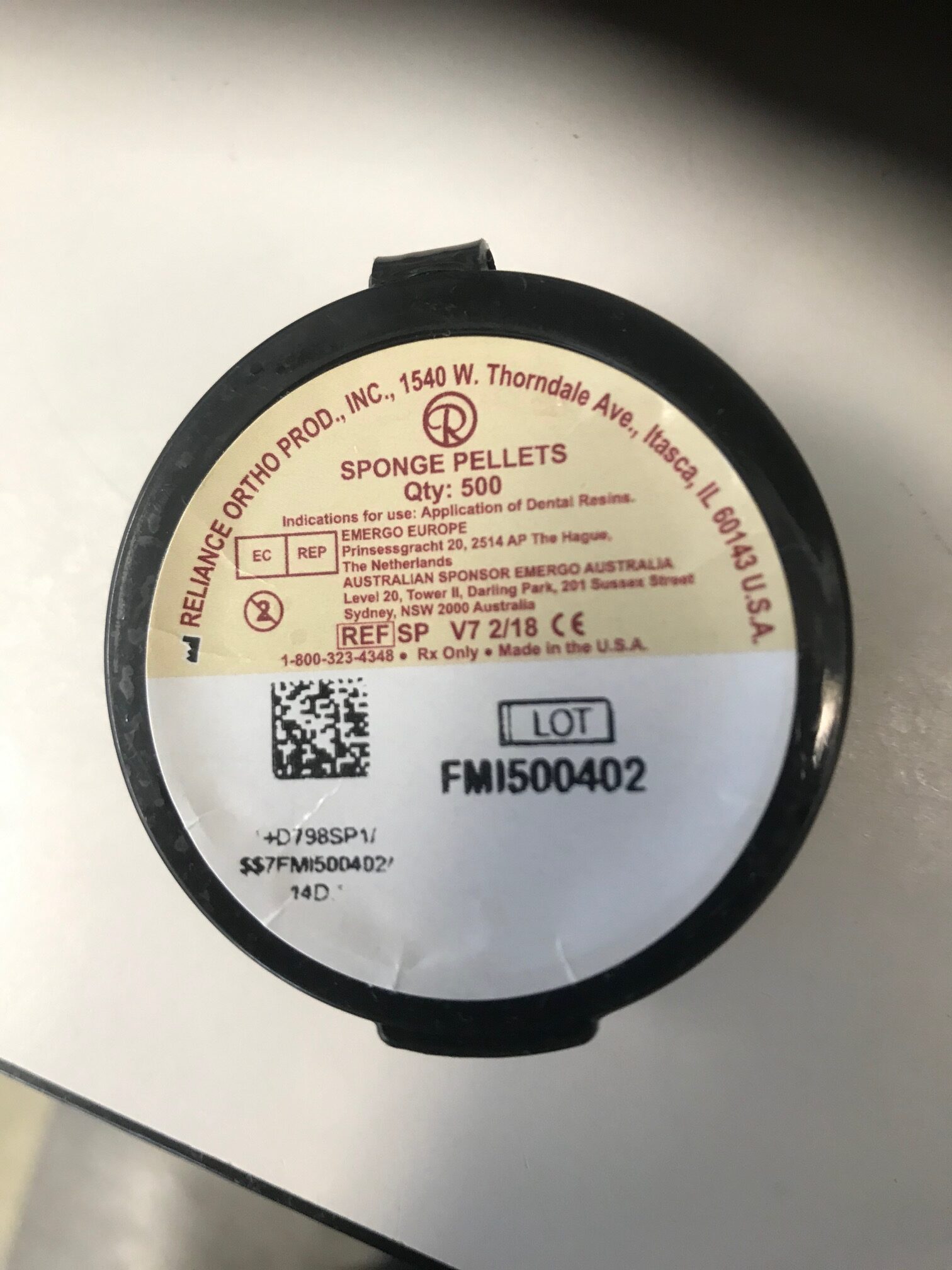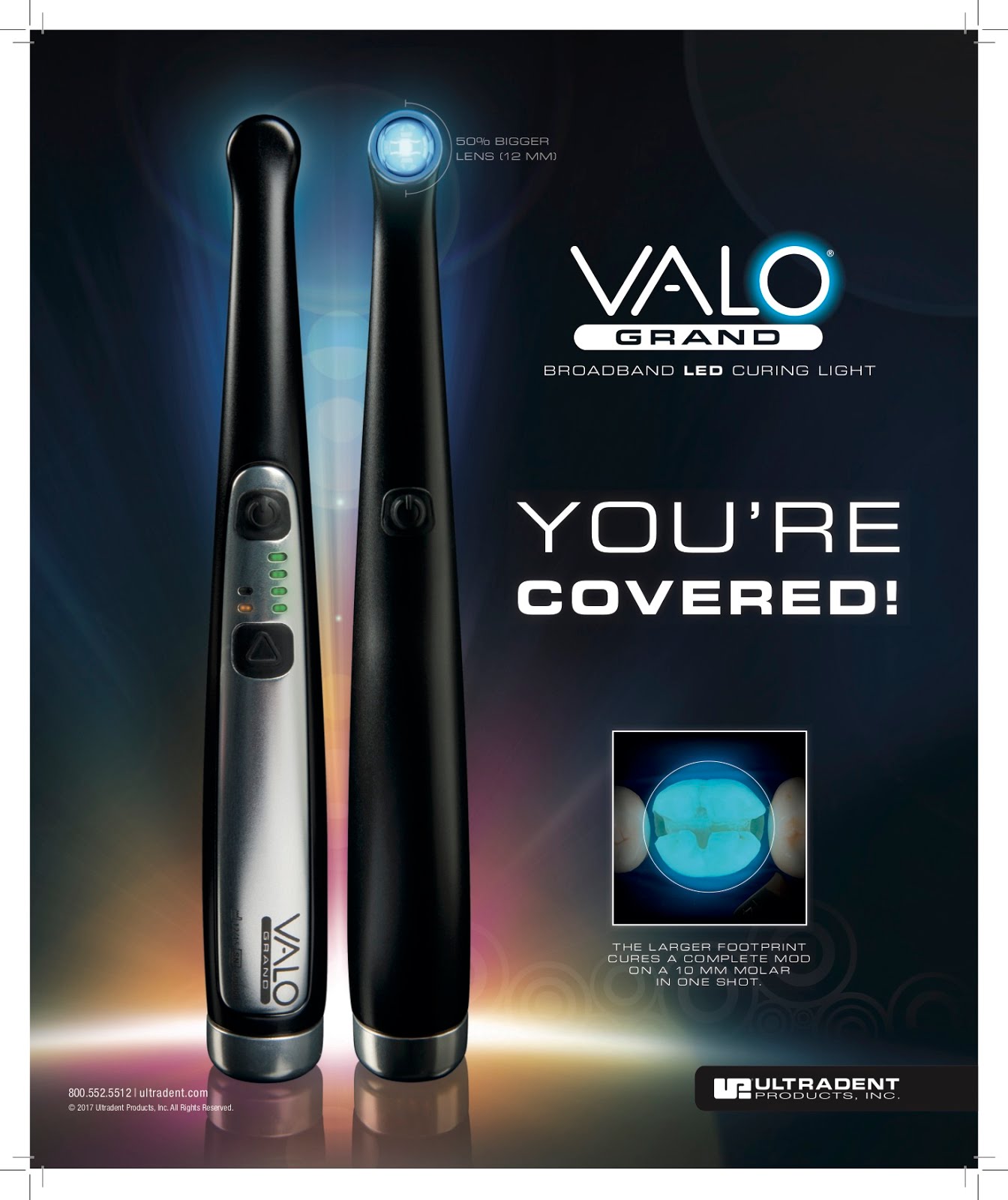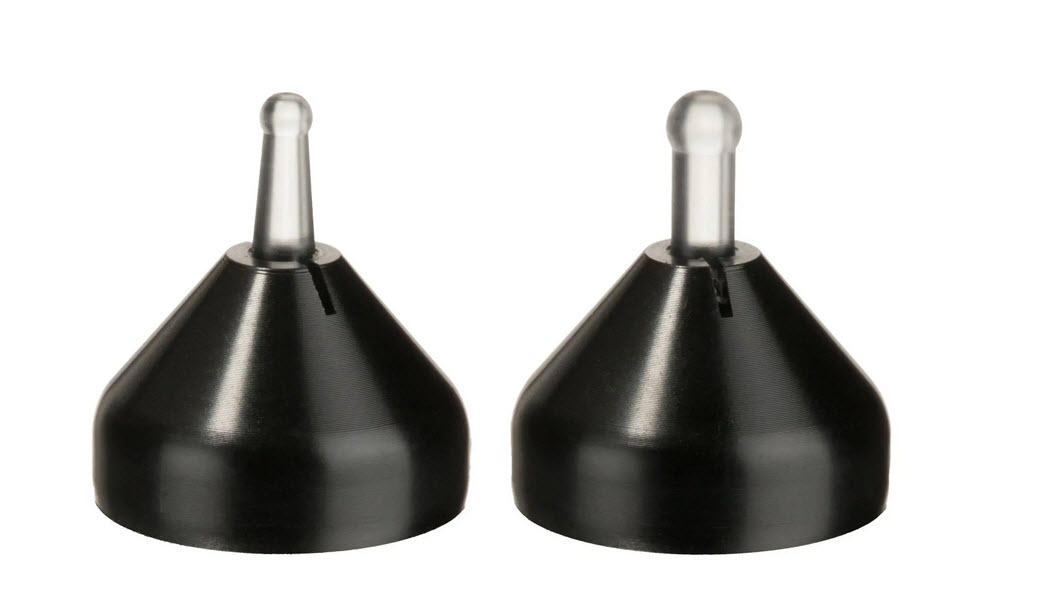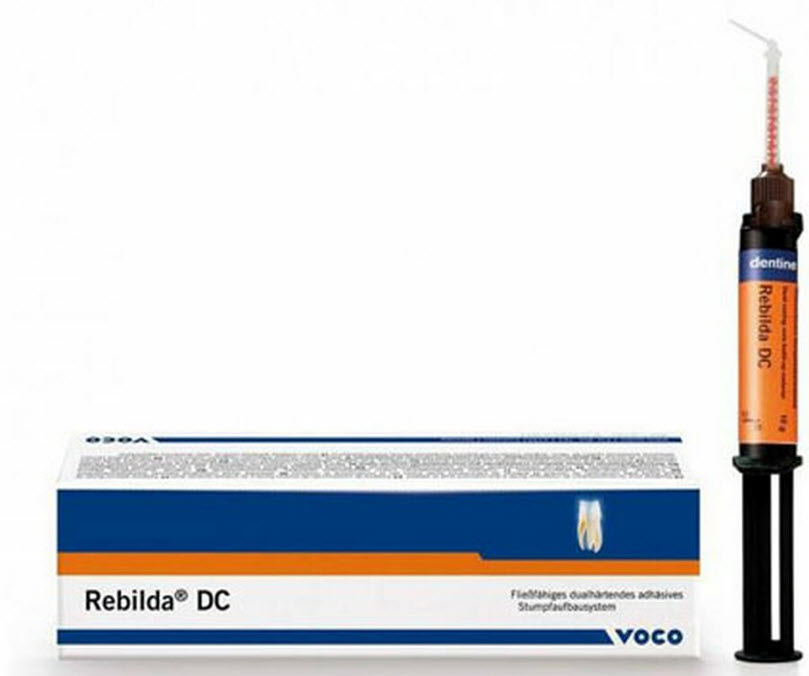PermaFlo Purple
PermaFlo Purple is a flowable composite material that was originally proposed by the online ROOTS Endodontic interest group back in the 1990s. The group was one of the earliest advocates of the orifice bonding technique using a dedicated material. The group felt that the traditional cotton/Cavit or cotton/IRM method of temporization was an inadequate coronal seal and that a bonded resin material would be more effective in sealing the orifices of the canals. Permaflo Purple was developed by Ultradent to serve this need. The “Hendrix” purple color is important because it serves as an alert to clinicians that they are close to the pulpal floor and orifices. In the event that a tooth must be retreated or when a post space is necessary, this material can be easily recognized. Unlike as with tooth colored materials, it is easily recognized, and can be removed without risk of furcal or lateral perforation. Unless a post space is required, it is now a routine part of teh closure of all endodontic treatment especially cases where I am not placing a final restoration, a core or when the tooth must be left a while before it can be restored.

Figure 1 : PermaFlo Purple Orifice Bond
B&L Alpha2 Heat Carrier
The B&L Alpha A2 is a cordless heat carrying device made by B&L Biotech, for use with vertical compaction of warm gutta percha technique. Several tip sizes are available with varying degrees of thickness and taper. The cordless nature and fingertip control of the device makes it extremely easy to use, though there have been some issues with repeated cracking of the external housing and need for repairs, not affecting operation.

Figure 2: B&L Alpha2
Heat Carrier for Warm Gutta Percha Obturation. Several tips tapers are available.
B&L Beta Gutta Percha Gun
The Beta unit is also made by B&L instruments and is a cordless gutta percha trigger “gun” type delivery system. Pellets are inserted into the upper chamber and the gun warms the material to the desired adjustable temperature. It is then extruded through a silver needle. Two different sized needles are available, though I usually use the smallest diameter. The needles are extremely fragile and while they can be bent, they have to be replaced frequently. They have one advantage over other similar delivery systems in that these needles can be swiveled for easier access to the canals. The Beta comes with a bending tool that should always be used to bend the needles to the desired shape. Failure to do so can kink the silver needle or break it at the hub, and render it useless.
I use it mostly for “backfilling” but occasionally will use it with “System S technique” in complex anatomy cases when cone fits aren’t practical.
We have also had some issues with cracking of the external housing material of the gun and several “soft” triggers that don’t extrude well. Service has always been good but expensive. We usually keep at least an extra one or two “standby” in case one of the units has a problem. These replaced the older corded Obtura units that I used for many years. The cordless feature more than makes up for the minimal reliability issues. Beware of Chinese “knockoffs”.

Figure 3: B&L Beta

Figure 4: B&L Beta Tips
Note the copper colored ring at the bottom of the tip that allows these tips to swivel
Dovgan Pluggers –
(Unavailable -No Longer Manufactured)
Canal shapes and shaping have grown more conservative over the past 35 years. As Endodontists found Ni-Ti, the flexibility of this new metallurgy not only allowed for greater safety in instrumentation, it allowed for much more slender canal preparation and conservation of dentin. The highly flared Gates-Glidden and hand reamer based shapes gave way to more conservative canal sizes. I began to find that my older Schilder pluggers didn’t have the flexibility and shapes to accommodate obturation of these more conservatively prepared canals.
The solution came with the development of these double ended Ni-Ti pluggers by my colleague and friend, Dr. Joe Dovgan. His Dovgan pluggers offered less taper and Ni-Ti metal for greater flexibility. Furthermore, they were double ended, (35/45 and 60/80) colour coded and were relatively inexpensive. They are available in 2 lengths – like Schilder pluggers Regular (with 4x 5 mm markings – posterior teeth) and XL (5x 5mm markings- anterior teeth)
Joe was a brilliant guy, an innovator and a good friend. I miss him and am reminded of him with each case I obturate.

Figure 5 Left:
Dovgan Double Ended NiTi pluggers
Since I am treating molars 80% of the time, These are the two sets of pluggers I use most frequently
Figure 6 Right : The late Dr. Joe Dovgan
Inventor of the pluggers and several other useful Endo products.

Manufacturer
Miltex Instruments
Website
Cost
~ $39 each.
DOVGAN PLUGGERS ARE NO LONGER BEING MANUFACTURED OR SOLD
Sponge Mini-Pellets
While this may be be a small problem, I have always been annoyed at how dentists use cotton pellets to close their endodontic accesses. I am perpetually wrapping them about my handpiece burs when re-accessing the case. The noise this makes frequently startles the patient. At that point, the bur will be so bound up in the cotton that the only expedient solution is to have my assistant change the bur rather than struggling to disentangle it from the cotton.
Another reason to avoid cotton is that occasionally fibers protrude from the temp filling or out of the proximal surfaces, risking recontamination of the canals.
Instead of using cotton pellets, we now use mini Ortho Sponges (sponges used to etch teeth to allow binding of brackets for Ortho treatment) under our temporary fillings. The sponges are compressible, have no fibers and generally dissolve when in contact with Ca(OH)2 during the period of canal medication. On re-access of the canal, they cane be easily flushed away with irrigation. The sponges can also be cut to smaller sizes for use as spaces when I provide retention spaces for cores, or in post spaces over the Ca(OH)2 to prevent ingress of the temp material.

Figure 7: Mini Sponge Pellets
An inexpensive, excellent product to replace cotton pellet temporization.

Gutta Percha Cones
Dr. Kaufmann was using (NON standard) Diadent Gutta Percha cones until recently when Edge Gutta Percha was made available in Canada. Although most manufacturers claim consistency in their shapes, I have found a lot of size variation in gutta percha cones, depending on the manufacturer and the ”batch”. Some cones have the desired feather edge tip while others have tips are much larger than expected. Considering the minimal price, (and how much quality control we can expect at such littel cost) I suppose that is to be expected.
Dual glass slabs are frequently used to “roll down” the gutta percha cone to the desired shape. Sometimes that means a thinner tip. In other cases, it may mean rolling down the middle portion of an Extra Large cone to accommodate a younger patient with wider apex.
Selection of a gutta percha manufacturer and product is mostly a personal choice, more closely related to the shape (size and taper) of the canal prep you are used to making. Whichever cones you prefer, you should choose one that more frequently than not, matches you prepared shapes, whether they be more conservative or conventional.

Figure 8: Edge Endo cones size 20 tip .
Even in this photograph, we can see significant size variaton between the tips of the two cones on the extreme left.
EndoSequence BC RRM Fast Set Putty
EndoSequence BC Putty has become our most common Retrofilling, pulp capping (rare) and perf repair material. I prefer the fast set as it is far easier to control than the versions of bioceramics I have used in the past. For retrofillings, we leave it out in air for a few minutes to set a bit and make it easier to condense.

Figure 9: Endoesequence Putty
Valo Cordless Curing Light
Endodontists require curing lights that are able to cure deeply into teeth. As accesses become more conservative that becomes more of a problem. Buying a quality curing light is a good investment. The Velo by Ultradent is an extremely well built, reliable product, probably the best on the market. This cordless model keeps a long charge and is extremely rugged.
Since orifice bonding has become a routine part of my post operative endodontic regimen, I needed something durable that would cure deeply into the access of treated molars to allow me to seal the orifices. The Velo light and “proximal tips” pictured below allow me to do this quite easily. It is also excellent for curing large core buildups and placing light cured material as temporary access restorations. It’s a bit more expensive than most curing lights but you definitely get what you pay for with this device.

Figure 10: Valo light by Ultradent
Curing light

Figure 11: Valo tips used to cure deep in access
These tips are very useful for curing deep into teeth to allow placement of orifice bonds over completed endodontics
Kerr Pulp Canal Sealer – Regular Set
After 40 years, I am still using Rickerts formula of standard regular set Kerr root canal sealer as my gutta percha sealer. I have not succumbed to the resin, Ca(OH)2 or ceramic based sealers simply because I want the material to be easily removed should the case require retreatment . This sealer has (a) all of the qualities outlined in Grossmans original text of the most desirable qualities of a sealer (b) has stood the test of time, and (c) shows good bio compatibility. even in cases of larger puffs or larger lateral canals. It seems to be extremely well tolerated and excess most often resorbs over time. Until research can demonstrate that there is a reproducibly superior sealer that CAN be easily removed, I will continue to use it simply because it works.

Figure: Kerr Pulp Canal Sealer – regular set
Manufacturer
Sybron Endo
Website
Cost
$169 CDN as pictured above with powder, liquid and scoop
Rebilda DC Core Paste by Voco
For many years, I used Cavit, Cimpat a combination “sandwich” with IRM as my temporary seal. Unfortunately, many of my price sensitive and insurance dependent patients used to wait protracted times before they arranged for the definitive after-endo restorations.
During the past 30 years or so, it was uncommon for the Endodontists in my area to place buildups or cores after their endodontic treatment. I was unhappy with the poor compressive strength of Cavit and with the shrinkage of the IRM that occurs when it set. I needed something stronger to temporize my cases.
I tried some of the early light cure temp materials that were supposedly specifically made for closure/temporization of endo accesses but I found them rubbery and a poor seal.
I finally made the decision to go with a dual cure bonded core paste material to seal all my cases and use it to place cores ( when I am allowed to do that.) Is it expensive? Yes. But once the case leaves my office, I have NO control over if, or when the tooth will be restored. This way, I am using a material that (a) has good compressive strength (b) Self cures in the deeper layers where my curng light may not reach (c)is a “blue” color which tells the patient and the referring dentist that treatment of this tooth is not complete and that it requires proper restoration.
Is the seal always perfect? No. Bonding to crowns can always be difficult and marginal adhesion of the material is sometimes poor. But unlike cements, this material rarely gets pushed into the access because of the thickness I use, has good wear resistance and does not require mixing.

Figure: Voco Rebilda DC Dual cure Core paste
This is teh material I fequently use to temporarily seal accesses and do core build ups when requested.
Ceramage – by Shofu
Ceramage contains 73 % by weight micro-fine ceramic particles, which are embedded in an organic polymer matrix. This ensure excellent physical properties. We use it for ceramic and porcelain bonded to metal access restorations where we wish to try to avoid the dreaded “grey dot”.
Initially, orifice an bonding material is used to cover the orifice(s). ( PermaFlo purple in posterior teeth and tooth colored flowable composite in the aesthetic zone). A dual cure core paste composite is then used in access. In conservativley accessed cases where we are not sure the curing light is getting all of teh material, using a dual core material better insures set. A layer of opaquer is them used to mask the core material and a Cermage layer is then used over the Opqauer as a final aesthetic layer. Light transmission is very close to natural dentine and enamel; hence Ceramage combines a natural colour reproduction with an extraordinary strength and elasticity. It is our composite of choice when access closure in the aesthetic zone is required.

Figure Shofu Ceramage
This is the material we used for access closure in the aesthetic zones.
